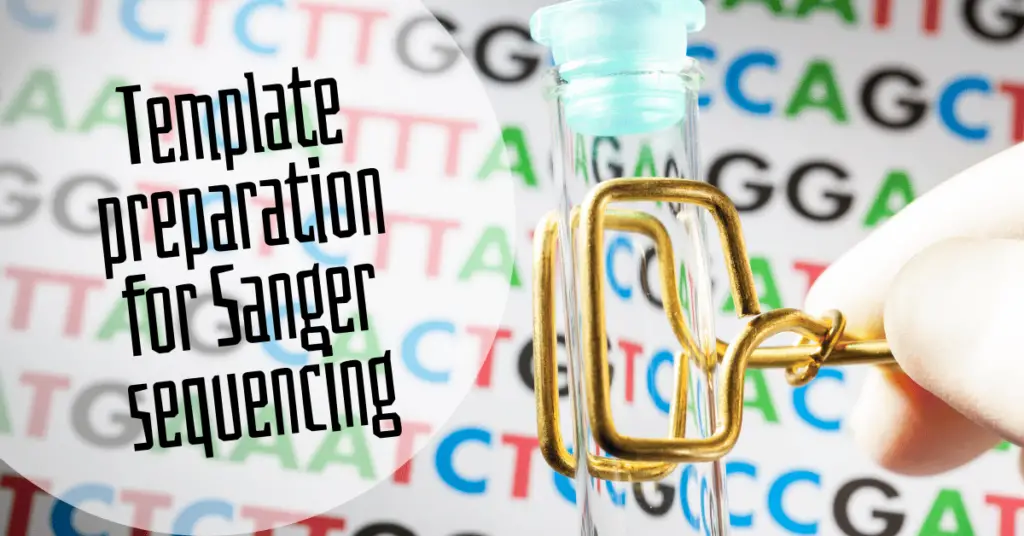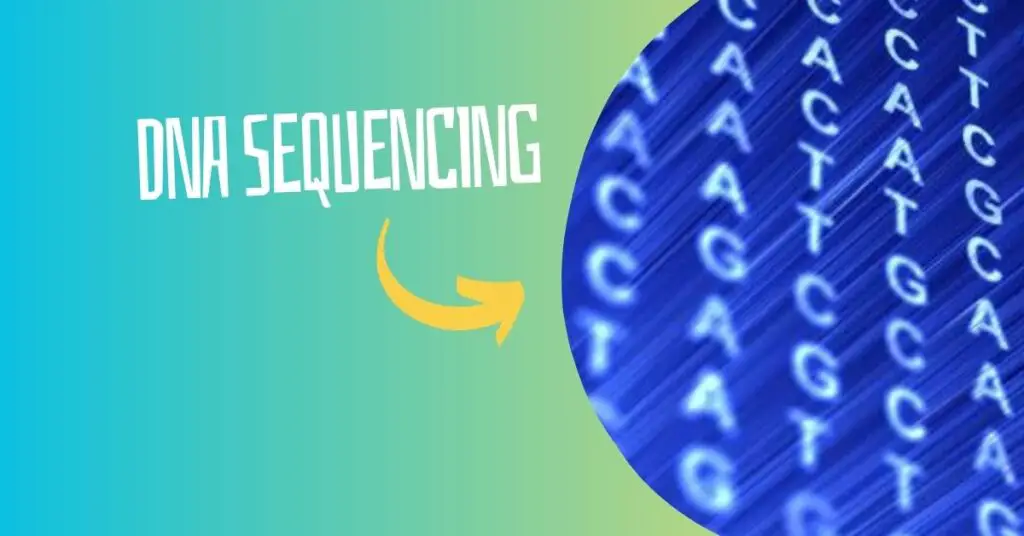“The quality of Sanger sequencing results highly relies on the quality of the template used during sequencing. Learn how to prepare a sample for Sanger sequencing in this guide.”
One of the crucial and primitive steps in Sanger sequencing is sample preparation. Whether the sequencing will succeed or not will highly depend on how effectively the sample is prepared.
That’s not rocket science, indeed, you need to consider several checklist points before using the template for sequencing.
Hey if you are unsure about your template to use in the sequencing and whether or not you will succeed and generate quality peaks in sequencing, then this guide is for you.
In this article, I will explain the complete process and a checklist for Sanger sequencing sample or template preparation.
Stay tuned.
Related article: Advances in Sanger Sequencing- Manual vs Automated Sanger Sequencing.
Key Topics:
Selecting nucleic acid extraction method
To elute a high-quality genomic DNA, that is mandatory for downstream processing, you can select a correct DNA extraction method, as per the sample type. Check out this table for more details.
| Sample type | DNA extraction method |
| Blood | Phenol, chloroform and isoamyl alcohol |
| Buccal swab or saliva | Spin-column kit or magnetic beads |
| Tissue sample | Proteinase K DNA extraction method |
| FFPE tissues | Spin-column kit or magnetic beads |
| Plant sample | CTAB DNA extraction method |
| Microbial sample | Bead beating, spin-column or magnetic beads-based DNA extraction |
| Plasmid DNA | Alkaline lysis followed by spin-column kit. |
Note that RNA is fragile and prone to degradation, so use a standardized kit or Trizol protocol for RNA extraction.
Now, these are the ideal recommendations, as per the published research, however, I strongly recommend using a spin-column kit for DNA extraction, followed by purification if needed. After selecting the extraction technique, it is time to isolate the nucleic acid.
Nucleic acid extraction
Now comes the critical part of the template preparation- Nucleic acid extraction!
Keep in mind that different procedures, chemicals and approaches are required for DNA and RNA extraction. RNA is least stable and prone to degradation hence, additional care and protocol modifications are required.
You can read this guide for RNA extraction.
DNA extraction is an easier procedure than RNA extraction. Keep in mind that every extraction step should be followed carefully. We have a huge library on DNA and RNA extraction articles, you can search and read it.
Lastly, the nucleic acid can be eluted in either nuclease-free water or TE buffer.
Quality assessment
Now, it’s time to assess if the nucleic acid that we extracted is of good quality or not. Poor quality nucleic acid makes the template preparation process difficult and reduces the overall quality of the sequencing experiment.
Nanodrop lite, a spectrophotometer instrument, is used for quality investigation. Pure DNA has a 260/280 ratio of ~1.80 while pure RNA has a 260/280 ratio of ~2.0. Once, the extract passes the quality assessment, the next is the quantitative assessment.
Quantitative assessment:
DNA quantity directly impacts the sequencing results. Insufficient templates can fail the PCR amplification and enough templates can not be prepared. So before amplification, quantitative assessment is mandatory.
Again, Nanodrop lite can be used for this purpose as well. Another instrument known as the Qubit fluorometer can also be used. Note that the quantitative assessment done by Qubit is more accurate than the Nanodrop lite.
The ideal DNA concentration for Sanger sequencing is given here.
| Sample type | DNA concentration |
| Eukaryotic genome dsDNA | >250 to 500 ng/µL |
| Plasmid DNA | 100-150 ng/µL |
| Single-stranded DNA | 25 to 50 ng/µL |
| Bacterial DNA | 2 to 3 µg/µL |
Amplicon generation
Now, it’s time for amplicon generation, which means PCR amplification. Choose a proven and standard PCR protocol for the selected target. Run at least 30 to 35 cycles to generate a sufficient amount of templates for sequencing.
Keep in mind that the primer chosen for amplicon generation must bind outside of the target region. Validate amplicons using agarose gel electrophoresis. Now! Our template is ready for sequencing.
Note 1: if sufficient amplicons can not be generated, re-investigate the DNA quality, in this case, re-purify the DNA and run the amplification protocol again.
Note 2: In the case of RNA, use reverse transcription protocol to generate the cDNA.
The concentration of PCR amplicons for Sanger sequencing:
| PCR product (100- 300 bp) | 5-15ng/µL |
| PCR product (300-500 bp) | 15- 20ng/µL |
| PCR product (500-1000 bp) | 20-30 ng/µL |
| PCR product (1000-2000 bp) | 30-40ng/µL |
| PCR product (>2000) | 40 to 50 ng/µL |
Quantify the amplicon before sending it for the next step.
But wait, something is left!
Template purification
Template purification is a crucial step that guarantees success in Sanger sequencing. The leftover primers, dNTPs and other ingredients can interfere with the cycle sequencing reaction. So ideally, it is mandatory to purify the PCR amplicons using the purification kit.
Ethanol precipitation + alcohol wash or spin-column PCR purification kit can be used to purify the PCR amplicons.
Still, our template is not ready for sequencing!
What’s left?
Avoid non-specific amplicons
For difficult templates, non-specific amplification can be commonly observed, noteworthy, those non-specific templates interfere with the sequencing reaction. That will surely mess up your sequencing results and deteriorate base calling quality.
What can we do?
Three optimizations can be done here.
Look for the quality and the quantity of the DNA, for instance, if the DNA concentration is too high for PCR, it will result in non-specific amplification. Use only 30 to 100 ng DNA. In most cases, by adjusting the concentration, the problem can be solved.
Next is to re-investigate the PCR protocol. Closely examine your annealing temperature, in particular. You can use gradient amplification to validate the annealing temperature. Select the correct temperature and re-amplify the template.
The third and most suitable way is to collect only the desired or target amplicon from the gene. For instance, if you observe two or three bands in the gel, select your target amplicon, cut it from the gel and purify it.
The process called DNA extraction from the gel can be used for this. You can even isolate the amplicon from the gel using the spin-column technique.
That’s it!
Our template DNA is ready for the sequencing. Now you can use it for DNA sequencing, prepare the sequencing reaction and run it in the sequencer.
Important note:
It is also mandatory to purify the cycle sequencing reaction before fragment analysis. Reaction leftover may interfere with the sample run while the unused ddNTPs generate background noise (peaks) if not removed from the reaction.
Related article: How to improve Sanger Sequencing Results?- 5 Technical Tips from Experts
Wrapping up:
Following this guide, you will get amazing peaks in your Sanger sequencing experiment, this is the proven template! However, the experimental success also depends on the concentration of sequencing primer, technique selection and how you perform it.
I hope you like this article, share it with your fellow scientists and amaze your Sanger sequencing experiment.
Happy sequencing!



mediums who see the future are on this website